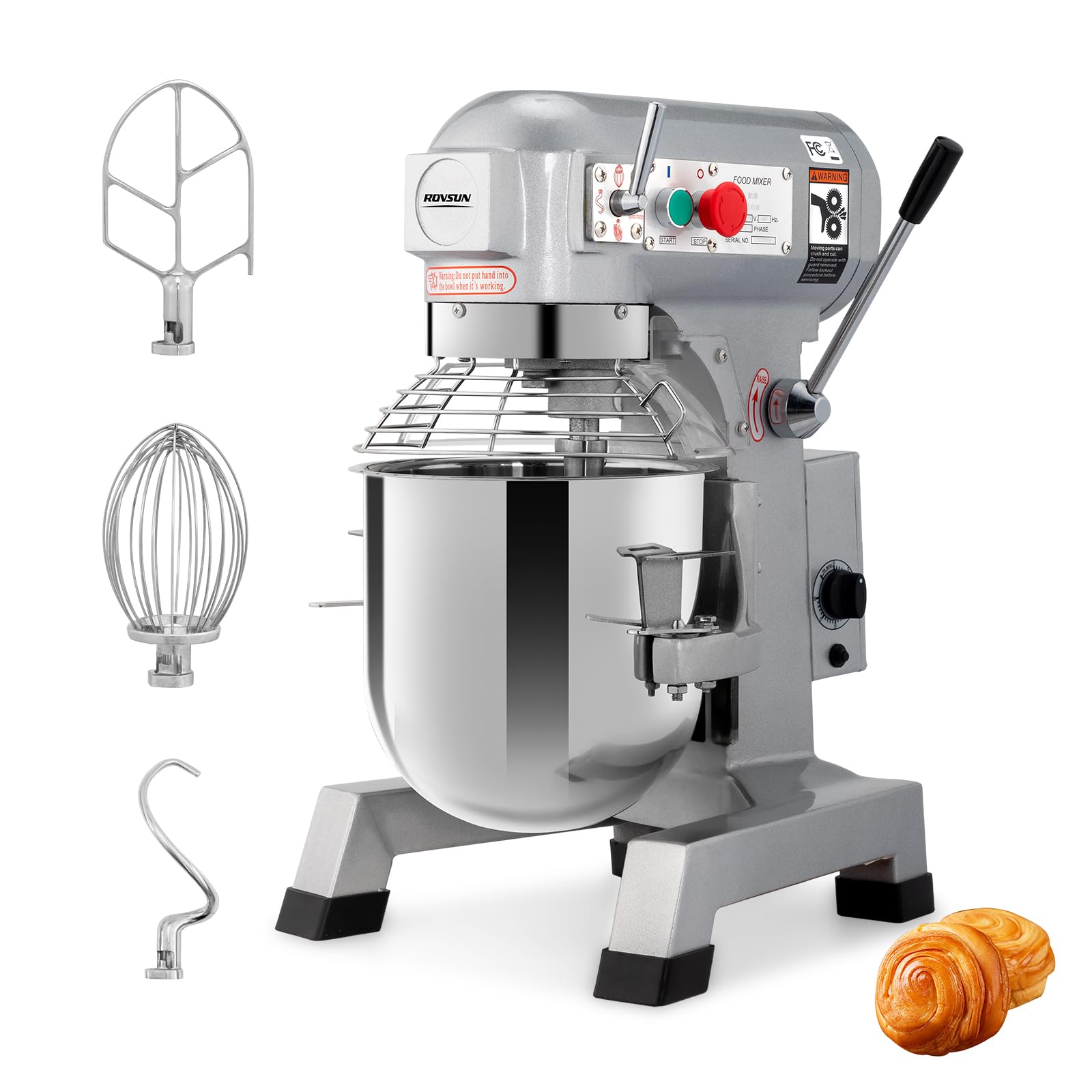When purchasing a commercial mixer for your bakery, restaurant, or food service operation, selecting the right model is crucial for efficiency, consistency, and long-term durability. This guide will help you understand the different types of mixers, key features to consider, and how to match a mixer to your specific needs.
一. Types of Commercial Mixers
A. Planetary Mixers
Best for: Bakeries, pizzerias, and high-volume kitchens
How they work: The mixing attachment rotates while the bowl remains stationary, ensuring even blending.
Common uses: Dough, batter, whipped cream, frosting
B. Spiral Mixers
Best for: Bread dough and heavy doughs (bagels, pizza, artisan bread)
How they work: A spiral-shaped hook kneads dough efficiently with minimal friction.
Advantages: Gentle on gluten development, ideal for yeast doughs
C. Horizontal Mixers (Dough Mixers)
Best for: Large-scale bakeries (50+ lbs of dough per batch)
How they work: A horizontal drum with rotating arms mixes dough in bulk.
Common uses: Bread, pretzels, bagels
D. Portable & Countertop Mixers
Best for: Small bakeries, cafes, and catering businesses
Capacity: Typically 5–20 quarts
Best for: Frosting, cookie dough, light batter
二. Key Features to Consider
A. Mixer Capacity
Small (5–20 qt): Ideal for cafes, small bakeries
Medium (20–60 qt): Restaurants, medium-sized bakeries
Large (60–140+ qt): Industrial bakeries, high-volume production
B. Motor Power (HP/Wattage)
Light-duty (⅓–1 HP): Whipping, light batter
Medium-duty (1–3 HP): Bread dough, cookie dough
Heavy-duty (3+ HP): Stiff dough (bagels, pizza)
C. Speed Settings
Variable speed: Better control for different consistencies
Fixed speed: Simpler operation, often in budget models
D. Attachments & Accessories
Standard attachments: Flat beater, dough hook, wire whip
Optional: Pasta roller, meat grinder, vegetable slicer
E. Construction & Durability
Stainless steel: Best for hygiene and longevity
Cast iron vs. aluminum gears: Cast iron lasts longer under heavy use.

